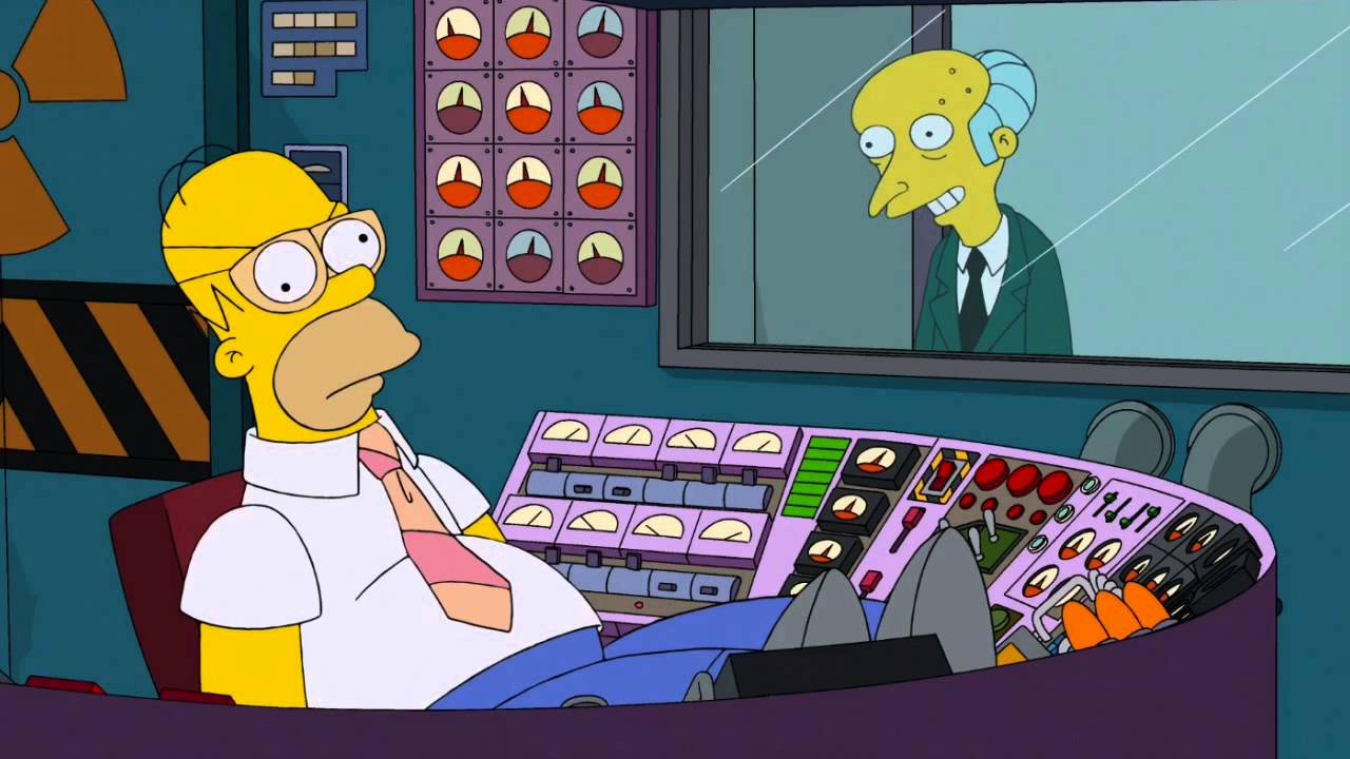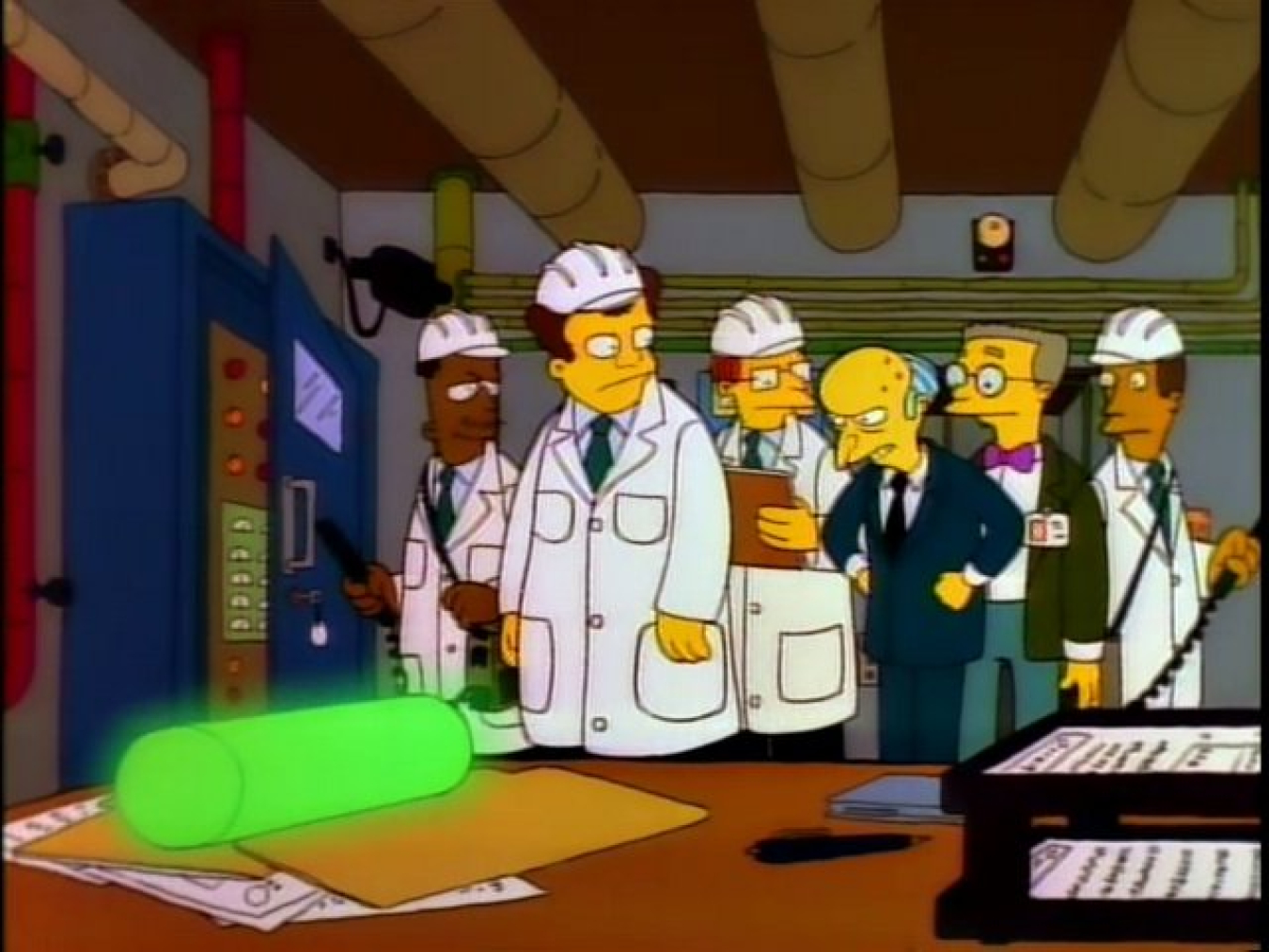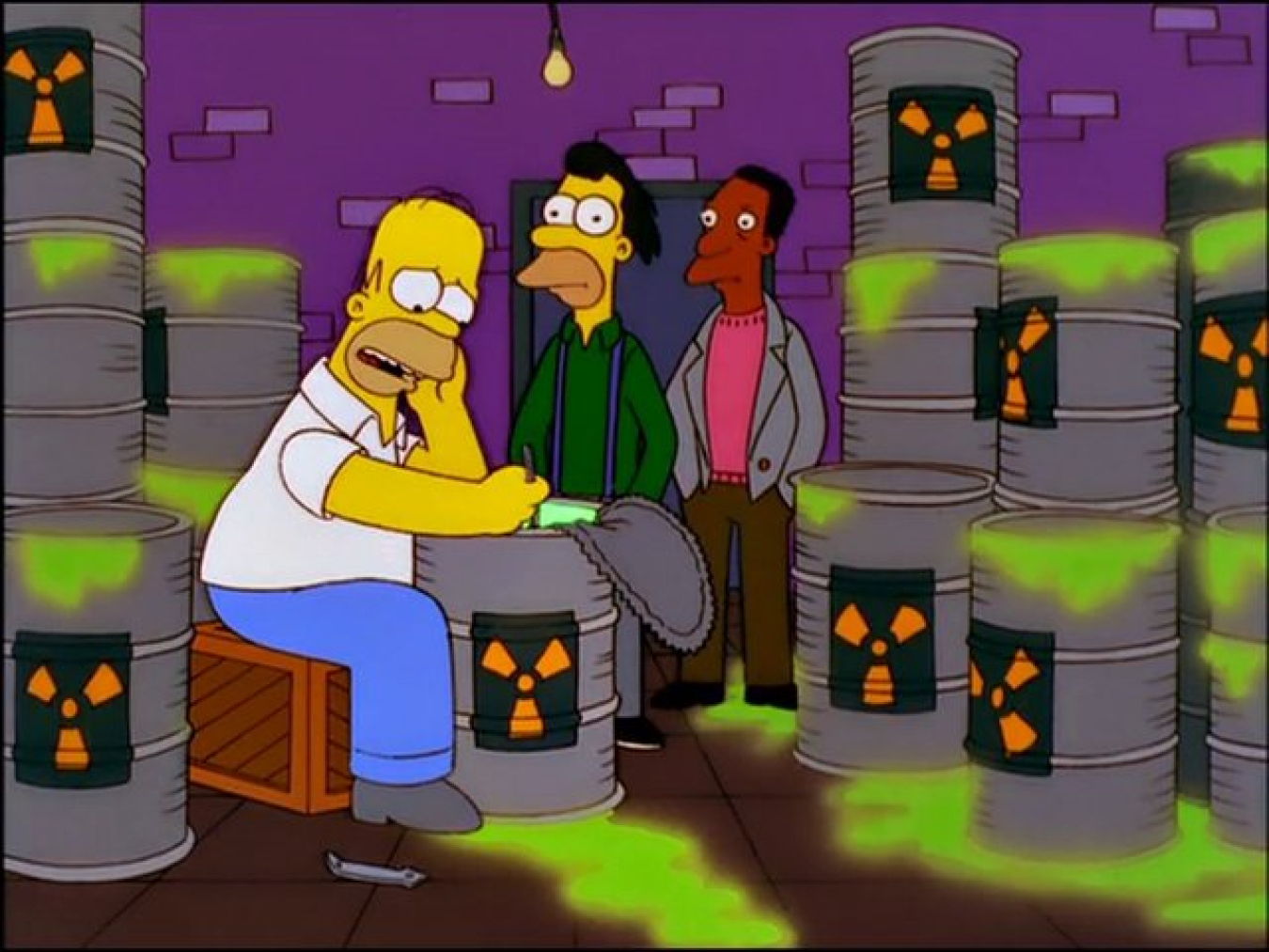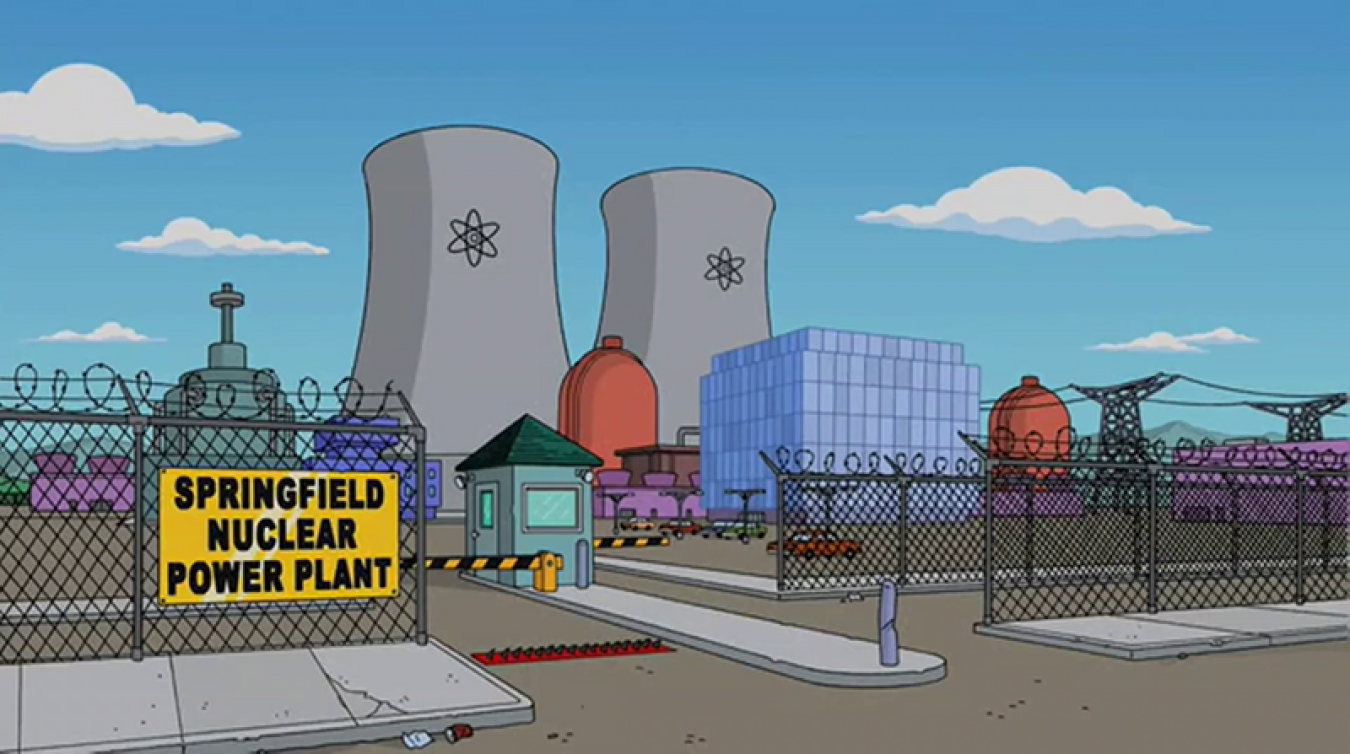Here are 7 things The Simpsons missed about nuclear energy.
May 13, 2025“The Simpsons.”
It’s a show we all know and grew to love—unless you actually work with nuclear technology.

America’s longest-running animated series on FOX has been making nuclear workers cringe on their couches for almost 3 decades now.
And while this show has produced a number of catch phrases that are immortalized in today’s pop culture, its comedic depiction of the fictitious Springfield nuclear power plant—and its negligent safety operator Homer Simpson—is far from “excellent.”
Here are seven things “The Simpsons” didn’t get quite so right about nuclear energy.
1. Control room operators do not work by themselves.

In several episodes, Homer Simpson is by himself in a control room working on a remote safety console to help manage the reactor.
According to the Nuclear Regulatory Commission (NRC), a supervisor, along with a second supervisor or reactor operator must be present at all times during reactor operation. All individuals, either operating or supervising the operation of a U.S. commercial reactor, must also be licensed by the NRC.
2. Nuclear power plants are well-maintained.
The Springfield plant is notorious on the show for its safety violations. They range from rat infestations and cracked cooling towers (held together with chewing gum) to leaky pipes that spill out radioactive waste.
This simply does not happen. The nuclear industry is one of the safest to work in and to live near.

It’s also held to rigorous safety standards.
Each plant has multiple oversight systems in place. Well-trained employees consistently perform regular safety inspections and preventative maintenance. Each plant also has at least two NRC-employed inspectors, who are free to observe anything at any time.
3. Fuel rods are not used as paper weights.
This should be self-explanatory. But, in case you were wondering, highly radioactive materials like nuclear spent fuel are safely handled by remote-operated cranes and use water as shielding.
4. Commercial nuclear spent fuel is not a liquid.
The show routinely depicts radioactive waste as a green, oozy liquid that is seeping out of huge drum containers and pipes throughout the facility.
In current reactors, nuclear fuel is made up of metal fuel rods that contain small ceramic pellets of enriched uranium oxide. The fuel rods are combined into tall assemblies that are then placed into the reactor.
After use, the fuel rods are first moved into steel-lined temporary storage pools that are about 40 feet deep. After at least 3 years of wet storage, they are then sealed inside welded steel-reinforced concrete containers.
5. Nuclear waste is safely stored.

Radioactive waste is commonly seen around the town of Springfield carelessly dumped into seas, stuffed into trees and put on playgrounds.
The process is a little different in real life.
Spent fuel is safely and securely stored at more than 70 reactor sites across the country. Roughly a quarter of these sites no longer have a reactor in operation. The fuel is either enclosed in storage pools or dry casks as mentioned above.
6. Nuclear power plants do not cause mutations.
Who can forget Blinky—the three-eyed fish or that scary mutated spider?
You won’t see these characters because nuclear power plants do not release any pollution into the environment—just water vapor. In fact, your granite counter tops give off more radiation than living next door to a nuclear power plant over the course of a year.
7. Power plants don’t buy safety command consoles from our national labs.
In one episode, “Bart on the Road,” Homer spills soda on his controls and calls the Oak Ridge Nuclear Facility (aka, our national lab) for a new console.
While our labs do work with industry on early-stage research and will often license their technologies to businesses, they do not take orders for replacement parts at nuclear facilities.
Replacement components are obtained from nuclear certified suppliers and require specialized skills to install.
Final Thoughts
While there are countless other examples we could point out, we do recognize that this show is a parody with the intent to entertain.
We are happy to point out, Springfield’s two reactors have been providing this fictional town with affordable, reliable, and secure power for almost 30 years. That’s less than half of the lifespan of today’s commercial reactors.
We will, however, be more than willing to provide feedback to Homer when the power plant is ready to submit an application to the NRC for their license renewal for an additional 20 years!
D'oh!

*This article was first published in April 2018 and is periodically updated to reflect current statistics.

